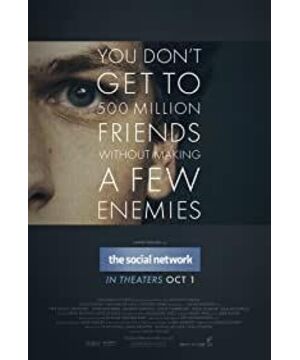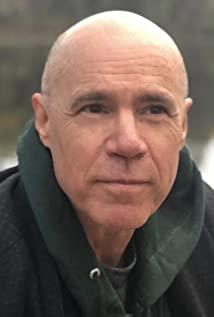Brings the Facebook entrepreneurial story, which has flourished on the Internet, to the big screen. Of course, the purpose of Hollywood is to make money at the box office. However, for IT practitioners, investors and Geeks, more attention is paid to the development of Facebook in reality.
"The New York Times" once broke the news that Facebook executives have been trying to influence the producer and the film, but because the producer ignored it and substantially modified the content of the film, the previous cooperation between the two parties was finally suspended. Chris Hughes, one of the co-founders of Facebook, believes that the description of the film is "crazy." Facebook President Sheryl Sandberg and Elliot Schrage, vice president of corporate communications, both said they hated the movie after watching it. However, the good news for Mark Zuckerberg is that the appearance of his male protagonist is very flattering. Therefore, he calmly said that even if the content of the film contains fictitious elements, it is still a publicity for the company, making people truly aware of the significance of this website.
Let's take a look at the reality of Facebook's entrepreneurial journey and whether Zuckerberg and others' experiences are consistent with those depicted in the movie. And have a deeper understanding of the stories of Mark et al. and Facebook.
Did Mark Zuckerberg really drop out of Harvard?
Yes. The study of real stories confirms that in June 2004, after finishing his second year of college, Mark moved to Palo Alto, California, and never returned to Harvard as a student.
.
Did Mark really announce his high school project Synapase for free instead of selling it for more than $1 million?
Yes, Synapase is a plug-in for Winamp player. It was a project made by Mark and his friend Adam for their Phillips Exter Academy final. This software will find the music you like and recommend the music you might like. Although Microsoft, AOL, and Winamp all offered up to $2 million to purchase the plug-in, they decided to release Synapase on the Internet for free. Later, they decided to try a transaction, but the offers offered by several companies were no longer satisfactory. -The Harcard Crimson
. Did
Harvard shut down Facemash or was it paralyzed by network overload?
After four hours of survival, Harvard’s computer services department noticed a surge in traffic and shut down Zuckerberg’s network access. In total, its users have reached about 450 students and 22,000 votes have been logged in. -The Facebook Effect
.
Does Mark Zuckerberg have a girlfriend?
Yes. He said in July 2010: "The truth is, I have been dating the same girl before I started Facebook." According to the book The Facebook Effect. Mark's girlfriend Priscilla Chan (she is of Chinese descent), and participated in the first meeting with Sean Parker.
.
When did the Facebook website go live?
On January 11, 2004, Mark registered the domain name thefacebook.com for $35 through Register.com. The website has been open to Harvard students since February 4, 2004. Then they decided to remove the from the name and purchased the domain name of facebook.com from AboutFace for $200,000, which made its debut on September 20, 2005. -The Facebook Effect
Did Mark Zuckerberg's photo appear on Facebook's original design?
This is not the case. According to the real story, the photo of Ap Pacino is in the upper left corner of the original design of the website. However, at the bottom of the page it does state that "this is a product of Mark Zuckerberg".
.
How much did Eduardo Saverin invest in Facebook? Why was Eduardo being launched into the company? How many shares did he acquire in Facebook?
The initial investment of Saverin to help create the company was $1000, Zuckerberg himself also contributed $1000. Soon, they unanimously agreed to add an additional investment of $10,000 each to cover the rapidly increasing server maintenance costs. A few months later, Eduardo opened a bank account to pay for business expenses and obtain a deposit for advertising revenue. At the same time, he himself added an additional $10,000 investment.
As pointed out in the movie, Eduardo Saverin is indeed a close friend of Zuckerberg. At the same time, the movie also correctly explained the series of mistakes Saverin made. He never fully believed in Facebook. But when he was pushed out of the company, he saw his ownership decrease drastically. However, in a subsequent problem solving, he got 5% of today's company, worth about 1.4 billion US dollars. (This is ignored in the movie)
. What was
Facebook's original salary agreement?
The initial agreement was a 7-3 split between Mark and Eduardo. A month later, Mark's roommate Dustin Moskovits also participated in the work. He got a 5% share from Mark. When Sean Parker joined, the company was redistributed. Zuckerberg got 51% of the company, Saverin got 34.4%, Moskovits 6.81%, Parker 6.47%, and the rest was allocated to their team of lawyers.
.
Whether Eduardo Saverin's stake has dropped to 0.03%?
I do not. Although not so low, his shares have dropped significantly. After the company restructured and received more investment, his 34.4% company shares were diluted to less than 10%, which led to the termination of their business relationship.
.
Does Mark work with Nopster founder Sean Parker?
Yes. Sean Parker actively sought to contact Mark and emailed him. Eduardo Saverin responded to the email and arranged for them to meet at Tribeca 66, a high-end Chinese restaurant in New York. Just like in the movie, the two hit it off, partly because Parker understood Mark's point of view. However, the two of them lost contact afterwards. Two months later, when they unexpectedly met on the street, Mark invited Sean to move into his home. Soon after moving, he became the president of the company.
.
Did Sean Parker actually introduce Mark to his first angel investor?
Yes. Parker contacted his friend Reid Hoffman-the founder of LinkedIn and tried to get him to invest. Hoffman believes that because of his relationship with LinkedIn, he should not lead the investment. But he then arranged a meeting for them with Peter Thiel, one of the founders of Paypal, and within a week, Peter Thiel agreed to provide them with a $500,000 loan.
.
What is the founder of Faceebook doing today? What about Sean Parker?
Mark Zuckerberg is still the CEO of Facebook.
Dustin Moskovits left Facebook in 2008 and founded Asane, the company dedicated to creating collaborative work management software.
Chris Huges left Facebook in 2007 to work for the Obama online campaign team. In 2010, he launched Jumo.com, a website used to link people with non-profit organizations. His contribution was largely ignored in the movie.
Eduardo Saverin settled his lawsuit with Facebook for an undisclosed amount in 2009 and was listed on the website again as a co-founder.
Sean Parder resigned after being arrested in 2005. In 2007, he created Cuases, a website that allows anyone to create a publicity group and post related information or fundraising. Recently, he devoted himself to Chatroulette.com, a website that randomly chained users from all over the world through webcams.
Reference reading:
Facebook Company Timeline,
Sean Parker Vanity Fair Article,
Meet Eisenberg's Cousin, Eric Fisher-TechCrunch,
Moskovitz's Take on The Social Network Movie at VentureBeat
This article is partially translated from the article chasingthefrog.com.
Original article, please indicate: Reprinted from tech2ipo
View more about The Social Network reviews











